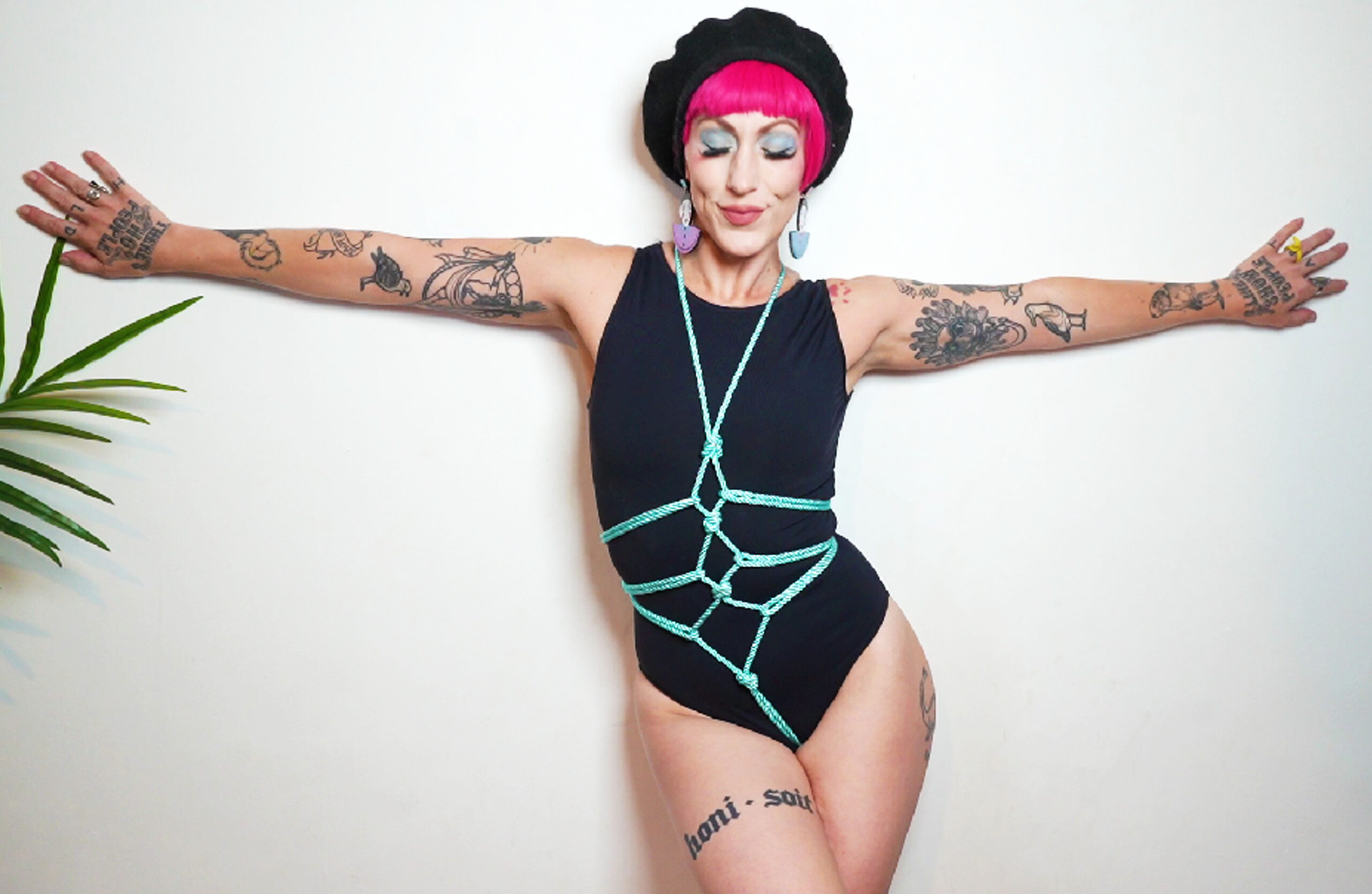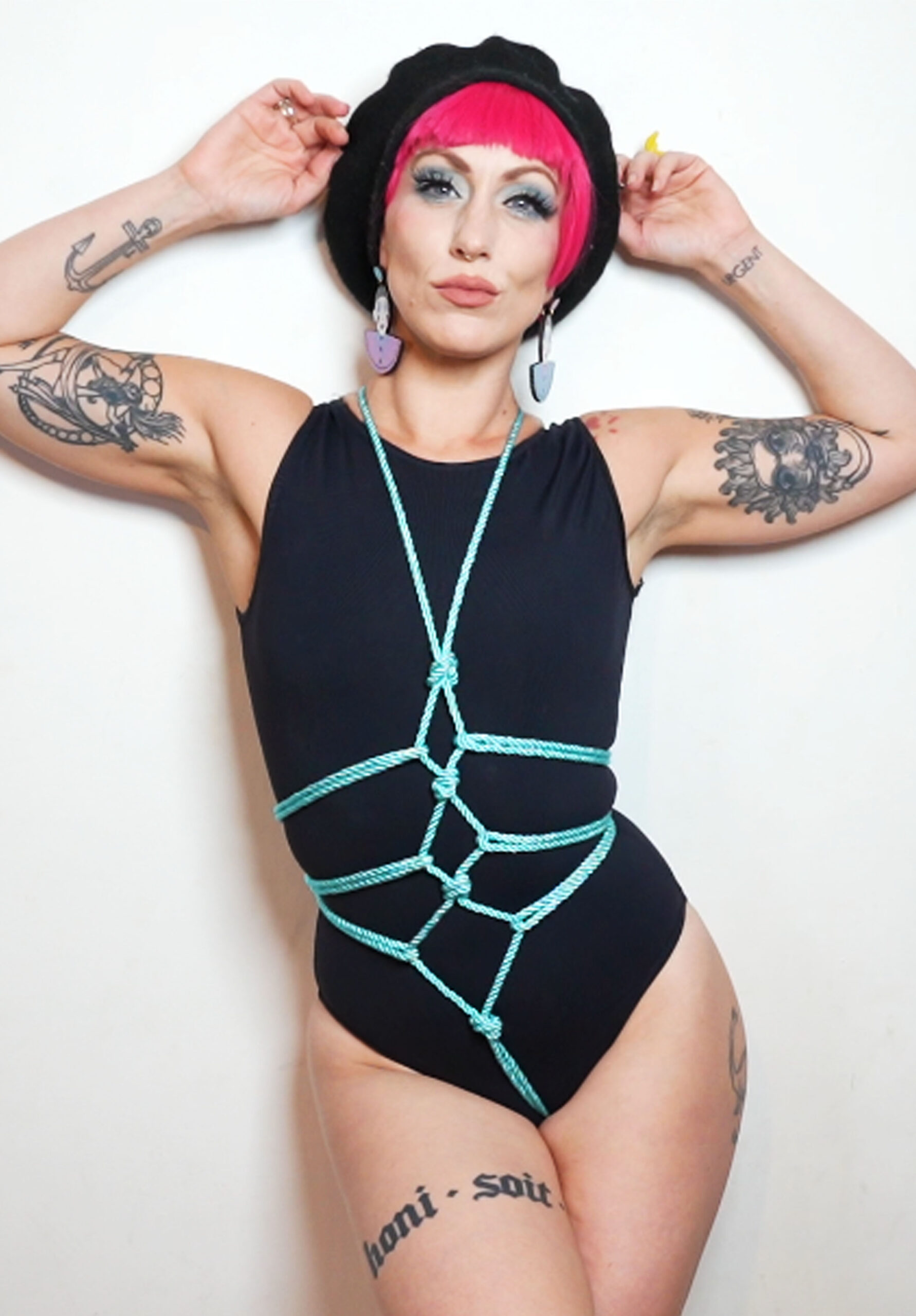The Origins of Zentai
The concept of Zentai has its roots in Japanese fashion and aesthetics, where the term “Zentai” refers to an obsession or fixation on something. In recent years, it has evolved to encompass a specific type of fetish attire that covers the entire body, known as full-body coverage. This style of clothing is often worn for sensory exploration purposes, where individuals seek to fully immerse themselves in tactile sensations and textures.
Early Influences and Inspirations
Zentai, also known as full-body coverage, has its roots in various cultural and historical practices that emphasize modesty, protection, and sensory exploration. One of the earliest influences on zentai can be seen in traditional Japanese clothing, such as the loincloth worn by samurai warriors. These garments provided coverage and protection while also serving as a symbol of honor and discipline.
The modern concept of zentai, however, is often attributed to the 1990s Japanese avant-garde and fetish fashion movements. Artists and designers like Riki, Yuko Shimizu, and Erika Ishioka began experimenting with full-body suits made from various materials, including latex, PVC, and nylon. These early designs were often inspired by science fiction, anime, and manga, as well as Western fetish fashion.
The sensory exploration aspect of zentai is also deeply rooted in Japanese culture. The concept of “honne” and “tatemae” – the distinction between one’s true self and the social persona presented to others – can be seen in the way full-body suits create a sense of separation between the wearer’s physical body and their inner self.
Early influences on zentai can also be seen in Western fetish fashion, particularly in the 1920s and 1930s avant-garde movements. Artists like André Breton and Man Ray experimented with full-body costumes that blurred the lines between reality and fantasy. These designs predated modern-day zentai, but shared a similar emphasis on sensory exploration and the subversion of social norms.
Zentai in Japanese Culture
Zentai, a term that combines “zone” and “entai,” refers to a subculture within Japanese society where individuals indulge in full-body coverage as both a form of self-expression and sensory exploration.
This fetish has its roots in the country’s vibrant adult entertainment industry, particularly in the realm of anime and manga. The zentai aesthetic often features tight-fitting bodysuits that provide a sensation of being wrapped or confined, leading to increased tactile sensitivity and heightened eroticism.
Beyond its connection to the adult entertainment sector, zentai has become a distinct aspect of Japanese pop culture, inspiring fashion designers and artists to create elaborate, full-body costumes that blur the lines between reality and fantasy.
This intriguing subculture offers a unique window into Japan’s complex relationship with the human body and sensory experience, revealing a fascinating realm where boundaries are pushed and the imagination knows no limits.
Sensory Exploration in Anime and Manga
Zentai, also known as full-body spandex or bodysuit fetish, has become increasingly popular in Japanese culture. Originating from Western fashion, zentai is now a staple in Japanese street fashion, particularly among cosplayers, anime enthusiasts, and fans of otaku (geek) culture.
For those unfamiliar with the term, zentai refers to a full-body spandex suit that covers every part of the body, often used as outerwear or as a costume. The allure of zentai lies not only in its functional aspect, but also in its ability to create a sense of unity and uniformity among wearers.
In anime and manga, zentai is frequently depicted as a way for characters to express their personality, showcase their physique, or simply as a form of creative expression. Some popular anime series feature characters wearing zentai, such as the iconic “Full Metal Panic!” where main character Sousuke Sagara wears a full-body spandex suit under his school uniform.
The sensory exploration aspect of zentai is also evident in anime and manga. Characters often use their body awareness to manipulate or control objects, people, or situations. In some cases, the full-body coverage provided by zentai enhances this sensation, allowing for greater intimacy and connection with others. The tactile experience of wearing zentai can also evoke a sense of vulnerability, as characters must rely on their intuition and trust in themselves.
Furthermore, zentai’s cultural significance extends beyond its practical use. In Japan, full-body spandex has become an integral part of the country’s fashion culture, symbolizing a desire for freedom, comfort, and self-expression. Zentai enthusiasts often attend fashion events and conventions, proudly showcasing their unique style.
As zentai continues to evolve in Japanese culture, its popularity as a fashion item, artistic medium, and fetishistic object is undeniable. Whether used for creative expression, social connection, or sheer practicality, full-body spandex has become an integral part of Japan’s modern pop culture landscape.

The Aesthetics of Zentai
Zentai, a term that originates from Japanese and Chinese languages, refers to full-body covering garments or suits designed to provide maximum coverage. This aesthetic has gained significant attention in recent years, particularly within the fetish community, where individuals seek to explore new dimensions of sensory experience. At its core, Zentai is about transcending personal boundaries, creating an immersive environment that stimulates multiple senses and challenges traditional notions of modesty and identity.
Full-Body Coverage and Sensualism
The aesthetic of Zentai, or full-body coverage, has been a subject of fascination in the realm of fetish culture for several decades. This type of attire involves covering every inch of the body, often with layers of spandex, latex, or other stretchy materials, creating a tight-fitting and immersive experience. The focus on sensory exploration is a key aspect of Zentai, as wearers aim to create an environment that stimulates their senses in unique ways.
One of the primary attractions of Zentai lies in its tactile properties. The smooth, flexible fabrics used to construct these garments provide a sensual experience when worn against the skin, inviting gentle caresses and deliberate touches. As wearers move, the fabric stretches and compresses, creating an almost meditative effect that encourages introspection and self-discovery.
Additionally, the visual impact of Zentai cannot be overstated. A well-crafted full-body suit can create a striking silhouette, accentuating curves and contours in a way that is both captivating and intimidating. The sheer scale and bulk of these garments can evoke a range of emotions, from fascination to unease, serving as a potent visual stimulus for those who witness them.
From a cultural perspective, Zentai has been associated with various themes and subcultures, including science fiction, anime, and cyberpunk. These influences have contributed to the development of distinct styles, such as the “Cyber Girl” look, which emphasizes bright colors, metallic accents, and dramatic makeup.
Sensuality plays a significant role in Zentai, as wearers often incorporate elements that stimulate their senses, such as scent diffusers, temperature control systems, or even subtle vibrations. These additions can heighten the overall sensory experience, blurring the lines between observer and participant, and transforming the wearer into an immersive art installation.
Ultimately, the Zentai aesthetic offers a unique intersection of form, function, and sensation, inviting explorations of the human body and its many surfaces. As a cultural phenomenon, it challenges traditional notions of fashion, intimacy, and self-expression, forging new paths in the realms of fetishism and performance art.

Cultural Impact of Zentai
The Zentai fetish has been gaining significant attention in recent years, particularly within the realm of BDSM and sensory exploration. Characterized by full-body coverage, often achieved through the use of elaborate costumes or suits, this fetish invites individuals to experience a profound sense of vulnerability and sensory deprivation.
Zentai in Fashion and Art
Zentai, a type of full-body spandex suit that covers every part of the body, has made significant cultural impact in both fashion and art. This fetish item has become an iconic representation of Japanese street fashion and pop culture.

- The zentai suit’s popularity can be attributed to its versatility and comfort. It allows individuals to explore their sense of identity and expression through the use of bright colors, patterns, and designs that showcase their personality.
- In addition to its practicality, zentai has also gained a significant following in the art world. Artists have begun to incorporate it as a medium for creative expression, using it to explore themes such as body modification, identity, and the blurring of lines between reality and fantasy.
The zentai fetish community has also played a crucial role in shaping its cultural significance. Members of this community often gather at events and festivals, where they showcase their elaborate costumes and participate in sensory explorations that push the boundaries of human experience.
Sensory Exploration in Zentai
Zentai is a fetish garment that has gained popularity worldwide for its unique ability to conceal the body, allowing individuals to explore new sensory experiences.
Tactile and Kinesthetic Experiences

Sensory exploration plays a significant role in enhancing the overall experience of zentai fetish wear. For those unfamiliar, zentai refers to a type of full-body covering that can range from simple jumpsuits to intricate, multi-layered suits. When donning zentai, individuals often discover a new world of tactile and kinesthetic experiences.
The sensation of wearing zentai can be both calming and stimulating, depending on the fabric and design used. For example, soft, breathable fabrics like cotton or spandex can provide a sense of comfort and relaxation, while more rigid materials like Kevlar or PVC can create a feeling of confinement and restriction. The tactile experience can also vary greatly, from the smoothness of synthetic fabrics to the texture of intricate details or patterns.
Moreover, the design of zentai can influence the kinesthetic experience, as various features such as zippered openings, buckles, or Velcro straps can create a sense of constraint or release. The weight and dexterity of the suit itself can also impact mobility and freedom of movement, adding another layer to the overall sensory exploration.
In addition, zentai wearers often report increased awareness of their body shape and form, as well as enhanced sensitivity to temperature, texture, and pressure. This heightened senses experience can lead to a deeper appreciation for the nuances of the human body and its relationship with external stimuli.
Role-Playing and Cosplay with Zentai
Zentai, a portmanteau of “zone” and “tentacle,” has become a popular niche within the realms of role-playing and cosplay. This subculture revolves around the concept of full-body coverage, where individuals adorn themselves in elaborate, often tentacle-like suits that emphasize tactile exploration and sensory stimulation. For some, Zentai serves as an outlet for kink and fetish expression, allowing them to experiment with novel textures, temperatures, and sensations. As a means of artistic expression and creative exploration, Zentai has attracted a dedicated community of enthusiasts who push the boundaries of fashion, art, and intimacy.
Costume Creation and Modification
Zentai, a term derived from the Japanese phrase “zip suit,” refers to a type of full-body coverage garment that has gained popularity among fans of cosplay and role-playing communities. These suits are designed to provide complete coverage, often made from stretchy materials like spandex or neoprene, allowing for ease of movement while maintaining an immersive character appearance.
- Zentai can be used to create a wide range of characters, from sci-fi warriors to fantasy creatures, by modifying the design and color scheme to fit individual preferences.
- For fans who enjoy sensory exploration through cosplay, zentai offers a unique opportunity to experience their character’s environment in a more intense way, as every sense is fully engaged with the suit’s tactile sensation.
Cosplayers often spend significant time and effort creating elaborate costumes that include intricate details, accessories, and props. However, for those who prefer or enjoy the full-body coverage of zentai, the process involves designing and crafting each component of the suit to ensure a seamless, cohesive appearance.
- The design process typically begins with selecting fabrics and materials suitable for the desired level of flexibility and durability.
- Pattern-making and prototyping enable cosplayers to refine their designs, taking into account comfort, mobility, and overall aesthetic appeal.
Zentai can be a transformative experience for those who embody their characters through fashion and costume creation. Whether as a form of self-expression, artistic exploration, or simply a preference, zentai has carved out its niche within the cosplay community.
Hygiene and Comfort Issues
Zentai fetish, also known as full-body coverage, is a complex and multifaceted aspect of human sexuality that explores the intersection of fashion, comfort, and sensory experience. At its core, zentai refers to garments or suits that cover the entire body, often leaving only the head, hands, and feet exposed. This specific type of attire can evoke a range of emotions and reactions, from excitement and curiosity to discomfort and anxiety. For those who explore this fetish, full-body coverage is not just about aesthetics or functionality, but also about creating a sense of envelopment, protection, or sensory exploration.
Sweat Management and Ventilation
Sweat management is a crucial aspect to consider when it comes to comfort issues, particularly in scenarios involving full-body coverage like zentai fetish attire.
One of the primary concerns with wearing zentai is the potential for excessive sweating, which can be exacerbated by the restrictive nature of the garment. This can lead to discomfort, chafing, and even skin irritation. To mitigate this issue, it’s essential to focus on ventilation and sweat-wicking materials.
Ventilation is key in preventing heat buildup and promoting airflow around the body. Designers can incorporate features like mesh panels, perforated fabric, or strategic cuts to enhance ventilation and allow for better air circulation. Additionally, using breathable fabrics such as cotton, linen, or moisture-wicking synthetic materials can help keep the wearer cool and dry.
Effective sweat management also involves understanding the body’s thermoregulation processes. When the body detects excessive heat, it activates the sweating mechanism to cool itself down. By recognizing this process, designers can create garments that encourage natural cooling, such as those with phase-change materials or built-in cooling systems.
Mental Health and Emotional Wellbeing
Mental health and emotional wellbeing are just as important as physical health when it comes to overall quality of life. The way we think, feel, and behave can have a significant impact on our daily lives and relationships with others. In recent years, there has been growing recognition of the need to prioritize mental health and emotional wellbeing, and to break down stigmas surrounding conversations about mental illness.
One area where this is particularly important is in the realm of fetish culture, where individuals may explore their desires and boundaries through specific forms of sensory exploration. For some, this can involve full-body coverage, which can be a way to feel safe, secure, and connected to one’s own body. In exploring Zentai fetish, it’s essential to consider not only the physical aspects but also the emotional and psychological implications for individuals who engage with this type of practice.
Emotional Boundaries and Communication
Mental health and emotional wellbeing are crucial aspects to consider when exploring any form of kink or fetish, including full-body coverage and sensory exploration. Setting clear boundaries and prioritizing effective communication with a partner are essential in ensuring that all parties involved feel comfortable and respected. Establishing a safe word or signal can help prevent overwhelming or discomfort during sensory experiences.
Emotional wellbeing is also closely linked to maintaining healthy emotional boundaries. Prioritizing self-awareness, recognizing emotional limits, and being mindful of power dynamics within relationships are vital in maintaining a balanced and fulfilling experience. Open communication with a partner about desires, preferences, and concerns can help create a more empathetic and understanding environment.
When engaging in full-body coverage or sensory exploration, it’s essential to consider the impact on both parties’ emotional states. This may involve discussing and establishing clear expectations, negotiating boundaries, and being attentive to non-verbal cues. By prioritizing mutual respect, trust, and open communication, individuals can create a safe and enjoyable experience that honors their emotional needs.
Enjoy playful games from Peaches and Screams Discover spreader bars for greater control and excitement at Peaches and Screams Discover white and nude lingerie for a soft and sensual look at Peaches and Screams Discover Zolo products for unique and stimulating pleasure at Peaches and Screams Shop sex lubricant applicators for easy and precise use at Peaches and Screams Shop plus-size corsets and basques at Peaches and Screams Explore butterfly vibrators and vibrating knickers for hands-free excitement at Peaches and Screams
Melissa J Design Ring of the Reeks Cycle Dejour Magazine
- Why Does My Lip Filler Not Last - November 14, 2025
- What Is The Difference Between Cheek Fillers And Temple Fillers? - November 12, 2025
- What Are The Best CBD Gummy Sweets For General Wellbeing - November 10, 2025

